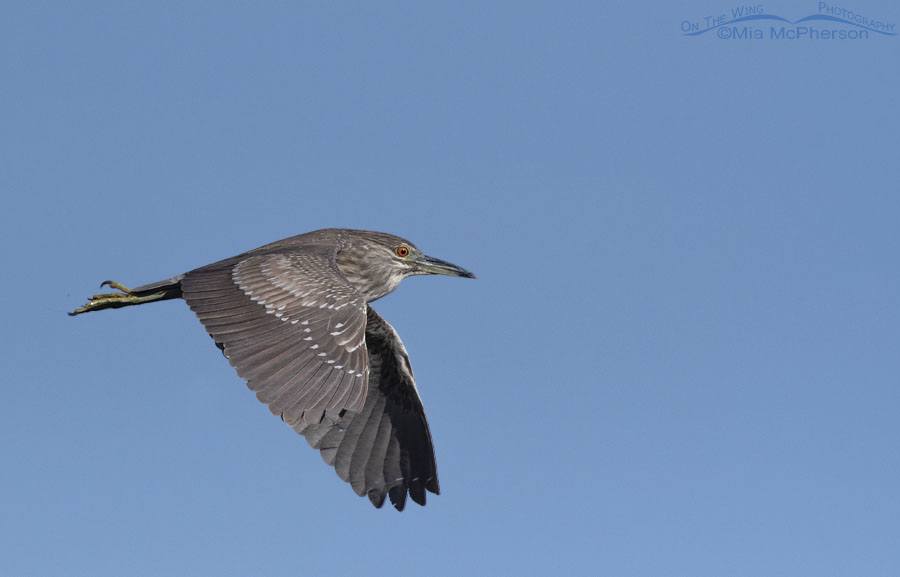 Immature Black-crowned Night Heron in flight against a clear blue sky – Nikon D500, f7.1, 1/6400, ISO 640, Nikkor 500mm VR with 1.4x TC, natural light
Immature Black-crowned Night Heron in flight against a clear blue sky – Nikon D500, f7.1, 1/6400, ISO 640, Nikkor 500mm VR with 1.4x TC, natural light
Normally I see Black-crowned Night Herons here in northern Utah all year long but this past winter I don’t recall seeing any of these herons at all so I have been delighted by seeing them on the wing since the weather started to warm up. When I spotted this immature Black-crowned Night Heron on the wing at Bear River Migratory Bird Refuge in April I hoped it would fly in closer than it did, still I liked the photos I took of it with a clear blue sky in the background.
This is an immature bird that was hatched last year and hasn’t molted into its adult plumage.
The wetlands surrounding the Great Salt Lake are great habitat for these medium sized, stocky herons. Black-crowned Night Herons are the most widespread heron in the world, they breed on every continent except for Australia and Antarctica. At one time they were hunted for their plumes and their populations declined but after laws were passed to protect them their populations rebounded.
Now some populations in some areas are declining again primarily due to habitat loss and destruction. Climate change could also affect this species because of rising sea levels. Here in Utah if some of the proposed dams on the Bear River are constructed the result will be that less water reaches the marshes surrounding the Great Salt Lake and the lake itself, that loss of water could have serious impacts on these herons and all the other birds that live there and those that migrate through.
People here should be more water wise than they are, we do live in a desert.
Life is good.
Mia
Click here to see more of my Black-crowned Night Heron photos plus facts and information about this species.


I hear you about living in a desert — I’m in Southern California. Gorgeous shot! I think I might like the juvvie plumage even more than the adult.
What a glorious shot.
Sigh on our species inability to think ahead. And indeed to think of any other species interests.
I like this shot, was looking for these the other day since I was told they inhabit a lake that I visit. I did not see one. I know what to look for in flight now.
I love these birds…have only seen them in captivity…would love to see them in the wild. Love this image!…
Nice photo, Mia
Fantastic photo! The Black-crowned Night Heron spring to fall population here in the Niagara area has dropped tremendously in the last 5 years. It’s not due to loss of habitat as our waterways on the Canadian side are either protected by the parks commission or the hydroelectric commission. You have to assume that it is climate change.